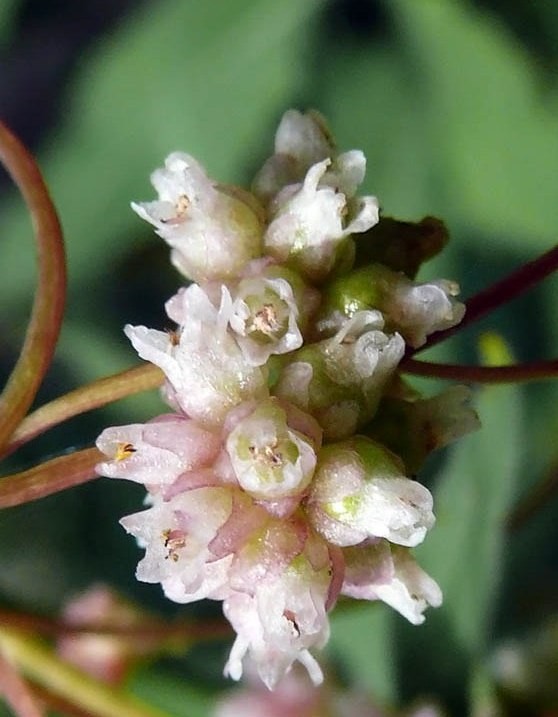Greater Dodder
(Cuscuta planiflora)

Description
Cuscuta europaea, the greater dodder or European dodder, is a parasitic plant native to Europe, which belongs to the family Convolvulaceae, but was formerly classified in the family Cuscutaceae. It grows on Asteraceae, Cannabaceae, Chenopodiaceae, Fabaceae, Urticaceae and other herbaceous plants, including garden plants such as Coleus and Impatiens. It is a notable parasite of lucerne (Medicago sativa). In many regions, including the Nepal Eastern Himalayas, this species are used as traditional medicine to treat hepatic diseases. The long thin stems of C. europaea are yellowish or reddish. They have an inflorescence that is produced laterally along the stems, the flowers are arranged in compact glomerules with few to many flowers. The pedicels are up to 1.5 millimetres (0.059 in) long. The 1.5 mm calyx is cup-shaped with 4 or 5 sepals that are triangular-ovate in shape. The 2.5–3 millimetres (0.098–0.118 in) corolla is pink, with 4 or sometime 5 lobes. The corolla remains after anthesis and is often reflexed. The stamens are inserted below sinus and the filaments are longer than the anthers. The anthers are ovate-circular with very thin scales. The ovary is subglobose with 2 styles. The stigmas are divergent or curved. The 3 mm wide, rounded seed capsule, is capped by the withered corolla. Each capsule often has 4, pale brown, elliptic, seeds that are 1 mm long. Cuscuta europaea can now be found in Japan and Algiers, as well as N Africa, W Asia and Europe. In India and Pakistan, the species occurs in the Himalayas, stretching from Kashmir to Sikkim on an altitude of 3,600 metres (11,800 ft).
Taxonomic tree:







